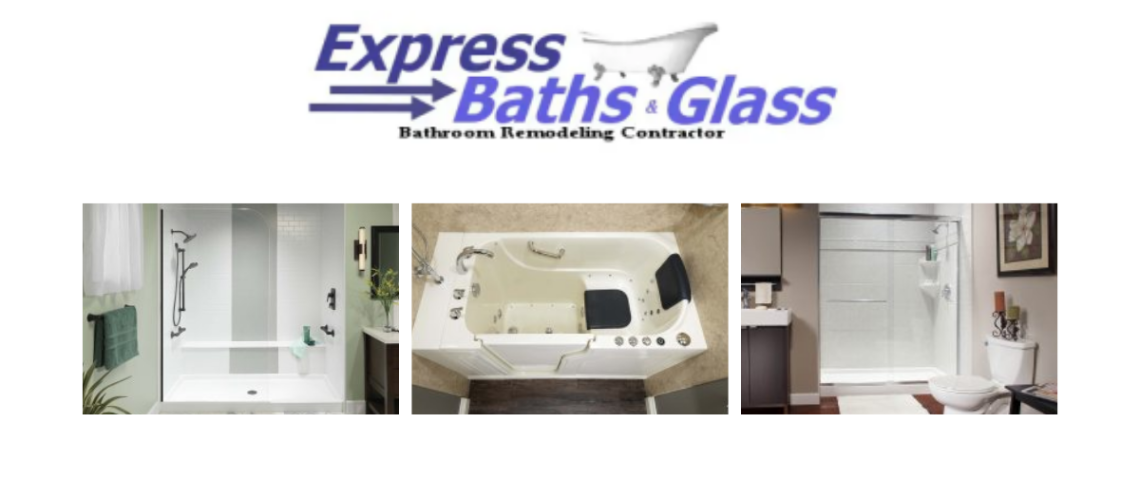This comprehensive guide will walk you through the crucial steps and expert tips to ensure that your Raleigh bathroom remodel is not only aesthetically pleasing but also waterproof and durable. Waterproofing is a crucial aspect of any bathroom renovation to prevent costly water damage and mold growth. By following the advice in this guide, you can be confident that your newly remodeled bathroom will stand the test of time, even in the wettest of conditions.
Key Takeaways:
- Proper waterproofing is important for a successful Raleigh bathroom remodel: Ensuring that your bathroom is properly waterproofed is crucial to prevent water damage and mold growth in the long run.
- Use high-quality waterproofing materials: Invest in quality waterproofing materials such as waterproof membranes, sealants, and grout to ensure long-lasting protection for your bathroom.
- Hire a professional waterproofing contractor: To guarantee a thorough and proper waterproofing job, it’s best to hire a professional waterproofing contractor with experience in Raleigh bathroom remodels.
Types of Waterproofing Materials and Methods
It is crucial to choose the right waterproofing materials and methods for your Raleigh bathroom remodel to ensure longevity and prevent water damage. There are several options available, each with its own advantages and disadvantages. Understanding the different types of waterproofing materials can help you make an informed decision for your project. Any reputable contractor will be able to guide you on the best choice for your specific needs.
Liquid Membrane Waterproofing
To ensure a watertight seal in your bathroom, liquid membrane waterproofing is a popular choice. This method involves applying a liquid coating that cures into a rubbery membrane, creating a seamless barrier against water infiltration. It is imperative to follow the manufacturer’s instructions carefully during application for optimal results.
Sheet Membrane Waterproofing
Even though liquid membrane waterproofing is effective, sheet membrane waterproofing offers added protection against water leaks. This method involves installing pre-formed sheets made of materials like PVC or CPE to create a waterproof barrier. Plus, sheet membrane waterproofing is relatively easy to install and provides excellent durability.
Cementitious Waterproofing
The application of a cementitious waterproofing coating is another popular choice for bathrooms. The cement-based mixture forms a rigid, seamless barrier against water penetration, making it ideal for wet areas. The key to successful application is proper surface preparation and following the manufacturer’s instructions carefully. The resulting waterproof barrier is durable and long-lasting.
Comparing the Pros and Cons
Understanding the pros and cons of different waterproofing materials can help you make an informed decision for your bathroom remodel. Here is a comparison of the advantages and disadvantages of popular waterproofing methods:
Waterproofing Membrane
| Pros | Cons |
|---|---|
| Provides a seamless barrier | May require professional installation |
| Durable and long-lasting | Can be more expensive than other methods |
| Easy to maintain | Some membranes may require specific adhesives |
Factors to Consider Before Waterproofing Your Bathroom
- Assess the size and layout of your bathroom to determine the scope of the waterproofing project.
- Determine the extent of exposure to water in different areas of your bathroom.
- Consider the compatibility and longevity of materials used for waterproofing to ensure durability.
Assessing Bathroom Size and Layout
Little bathrooms may require less waterproofing compared to larger bathrooms with multiple water fixtures. Understanding the layout will help you identify areas that are most susceptible to water damage and prioritize waterproofing solutions accordingly.
Determining the Extent of Exposure to Water
While some areas like the shower stall may have high exposure to water, other areas like the vanity or toilet area may have minimal exposure. Evaluating the extent of water exposure in each area will guide you in choosing the right waterproofing products and techniques for each specific area.
Material Compatibility and Longevity
With numerous waterproofing products available in the market, it is crucial to select materials that are compatible with the surface you are working on and offer long-term protection against water damage. Consider factors like flexibility, adhesion, and resistance to mold and mildew when choosing waterproofing materials.
Extent of water exposure will also determine the type of waterproofing system you need to implement. Areas with high exposure to water like showers may require more heavy-duty waterproofing solutions compared to areas with minimal water exposure.
Step-By-Step Guide to Waterproofing Your Bathroom
For a successful bathroom waterproofing project, it’s important to follow a step-by-step guide to ensure the best results. Below is a breakdown of the process in a table format:
| 1. Preparing the Area for Waterproofing | 2. Application Techniques for Different Materials |
| 3. Detailing Around Fixtures and Drains | 4. Drying and Curing Processes |
Preparing the Area for Waterproofing
Guide to preparing the area for waterproofing includes cleaning and removing any existing sealant or caulking around the bathtub, shower, and sink areas. Ensure that all surfaces are dry, clean, and free from any debris before applying the waterproofing material.
Application Techniques for Different Materials
Now, let’s discuss the application techniques for different materials. Whether you are using a liquid membrane, sheet membrane, or waterproofing paint, each material has specific application instructions. It’s crucial to follow the manufacturer’s guidelines to achieve the best waterproofing results for your bathroom remodel.
Waterproofing
Detailing Around Fixtures and Drains
Any waterproofing project should include detailed work around fixtures and drains. Properly seal the areas around pipes, faucets, and drains to prevent water leaks and ensure a watertight seal. Use appropriate waterproofing materials and techniques to secure these vulnerable spots in your bathroom.
Preparing
Drying and Curing Processes
One crucial part of the waterproofing process is the drying and curing processes. Allow the waterproofing material to dry and cure completely according to the manufacturer’s instructions before installing any tiles or finishing materials over it. This will ensure the effectiveness and longevity of the waterproofing system in your bathroom.
Application
Tips for a Successful Bathroom Waterproofing Project
Despite the aesthetics and design of your bathroom, ensuring that it is waterproof is crucial in preventing water damage and mold growth. To help you achieve a successful bathroom waterproofing project, here are some tips to keep in mind:
- Choose high-quality waterproofing materials
- Properly prep the surfaces before waterproofing
- Ensure proper installation by following manufacturer’s guidelines
- Regularly inspect and maintain waterproofed areas
Knowing the importance of these tips will help you achieve a long-lasting and effective waterproofing solution for your bathroom remodel.
Choosing the Right Contractor
While initiateing on a bathroom waterproofing project, selecting the right contractor is crucial. Look for experienced professionals who specialize in waterproofing and have a track record of successful projects. Make sure they are licensed and insured to guarantee a job well done.
Maintenance and Upkeep of Waterproof Surfaces
Maintenance is key to ensuring the longevity of your waterproof surfaces. Regularly clean and inspect the waterproofed areas for any signs of damage or wear. Addressing any issues promptly can help prevent costly repairs in the future.
Waterproofing your bathroom surfaces not only protects them from water damage but also extends their lifespan. Consider using sealants or waterproof coatings on grout lines, tiles, and fixtures to create an additional barrier against moisture.
Troubleshooting Common Waterproofing Issues
Assuming you encounter any waterproofing issues in your bathroom, it is important to address them promptly to prevent further damage. Common problems such as leaks, cracks, or mold growth should be tackled immediately by identifying the root cause and implementing necessary repairs.
Tips for troubleshooting common waterproofing issues include conducting regular inspections, fixing any leaks or cracks as soon as they are detected, and consulting with a professional if needed. By staying proactive, you can maintain a durable and watertight bathroom for years to come.
Summing up
Ultimately, waterproofing is a crucial step in ensuring the longevity and quality of your Raleigh bathroom remodel. By following the ultimate guide provided, you can take the necessary measures to protect your investment from water damage and mold growth. Remember to seal gaps, use waterproof materials, and implement proper ventilation to create a durable and functional bathroom space. With these best practices in place, you can enjoy a beautiful and worry-free bathroom for years to come.
FAQ
Q: Why is waterproofing important in a Raleigh bathroom remodel?
A: Waterproofing is crucial in a Raleigh bathroom remodel to prevent water damage, mold, and mildew. Raleigh’s humid climate can exacerbate these issues, making waterproofing important to ensure the longevity and durability of your remodel.
Q: What are the key areas in a Raleigh bathroom that require waterproofing?
A: In a Raleigh bathroom remodel, key areas that require waterproofing include the shower surround, bathtub area, bathroom floor, and any other surfaces that come into contact with water regularly. Properly waterproofing these areas will protect your bathroom from water infiltration and damage.
How can I effectively waterproof my Raleigh bathroom during a remodel?
A: To effectively waterproof your Raleigh bathroom during a remodel, use high-quality waterproofing materials such as waterproof membranes, sealants, and waterproof grout. Make sure to follow manufacturer’s instructions carefully and consider hiring a professional contractor with experience in waterproofing to ensure a thorough and long-lasting waterproofing job.



